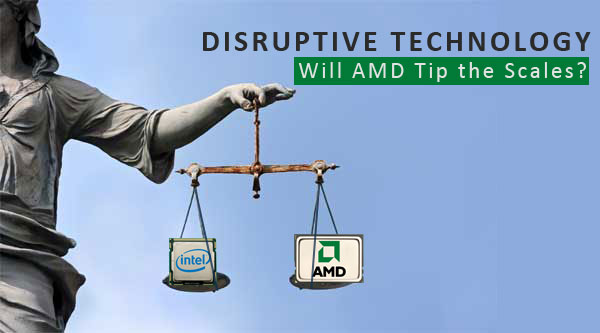

We saw that tidal-wave coming and mentioned that volume sales of thin-and-light, ultrathins and ultrabooks, would re-charge the semiconductor manufacturing supply chain, because 90 percent of laptops will be produced in that form-factor by the middle of 2013. Volume production of ultrathins will happen by the end of 2012. Mid-year changes will include even better chip-sets and some models will be offered at a $500 US price-point.
ODM Wistron (Original Design Manufacturer) predicts 20% growth in notebook shipments in 2012, and that may be an understatement. Consumers and business, enterprise IT departments may be overdue to meet pent-up replacement demand having delayed about as long as they can, as a result of the global economy. It seems to be time for a massive wave of replacement computers. Price competition in the ultrathins, ultrabooks form-factor will fill those needs well, with improvements in mobility, processing power, and graphics.
AMD may benefit significantly as they launch their Trinity-based platform at prices 10% to 20% lower than comparable Intel products. Analysts believe the AMD ultrathin notebooks may be priced $100 to $200 US lower than Intel ultrabooks.
Analyst Deron Kershaw at Gap Intelligence says consumers will care which chip is inside if they are price sensitive, and he also thinks we will see AMD ultrathins as low as $500, undercutting Intel’s least expensive ultrabooks by about $200. At the end of 2011 one Intel-based ultrabook sold for $699 US on a sale promotion. It seems clear that with volume ramping up, that $500 price-point will be achieved on good quality systems.
AMD's solution is the APU, Accelerated Processing Units containing both a GPU (Graphics Processing Unit), and a CPU (Central Processing Unit), sometimes referred to as a system-on-chip design. AMD’s graphics processors have, over time, proven better than those made by Intel, although overall their CPUs may be approximately equal, depending on precisely which benchmarks and processors are being compared.
It was Steve Jobs of Apple who said that he liked the integrated system-on-chip design, and openly stated that Intel's chips "suck" regarding graphics performance (See page 493 of Steve Jobs Biography).
Disruptive Technology?
AMD has recently hinted that it will consider ARM chips for some devices. If ARM chips were to be combined with their APU technology into a single device AMD would blast to the front of the class with highly disruptive technology. ARM stands for the term Advanced RISC Machine. RISC is an acronym for Reduced Instruction Set Computer. Acorn Computers, VLSI Technology, and Apple founded ARM Inc. as Advanced RISC Machines in 1990.
Another technology, AMD's Lightning Bolt port, will combine a variety of notebook ports into just one port, delivering very high-speed input / output technology while consolidating USB 3.0, DisplayPort, and power over a single cable, with mini DisplayPort connectors.
A sales volume driver for ultrathins, ultrabooks will be the introduction of Windows 8, which will include the Metro user interface (UI). Corporate IT departments will benefit from features such as built-in anti-virus and anti-malware, cloud-based services, a newly re-designed file system, a greatly improved Task Manager, cross-hardware-platform convergence on multiple devices, and IT deployment options.
A report by Daniel Ashdown of Juniper Research found that Windows 8 will be important to ultrathins, ultrabooks sales volume, because of its always-on and connected functionality coupled with extended battery-life management features.
Assessment
Ultrathins and ultrabooks are what 90 percent of notebooks will be in the near future, because they combine the characteristics of a notebook’s larger display, better keyboard, superior processor (CPU or APU), more RAM memory, a solid-state-drive (SSD), and multiple connectivity options, with the netbook or tablet's size, mobility, light weight, and battery-life. That spells both convergence and sales volume, even without using spell-check.

 Laptop & Tablet Parts
Laptop & Tablet Parts





















One Response to AMD Ultrathins vs Intel Ultrabooks – Upcoming Notebook Sales Trends 2012